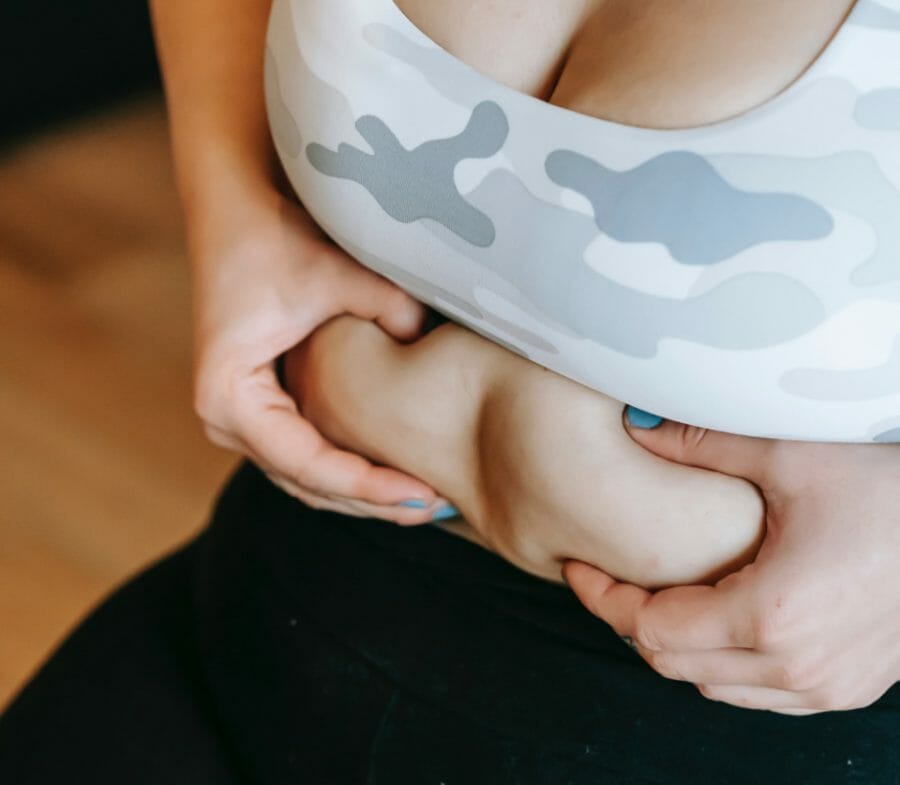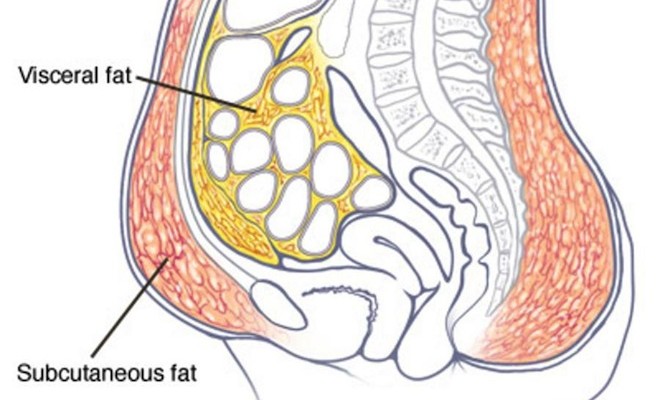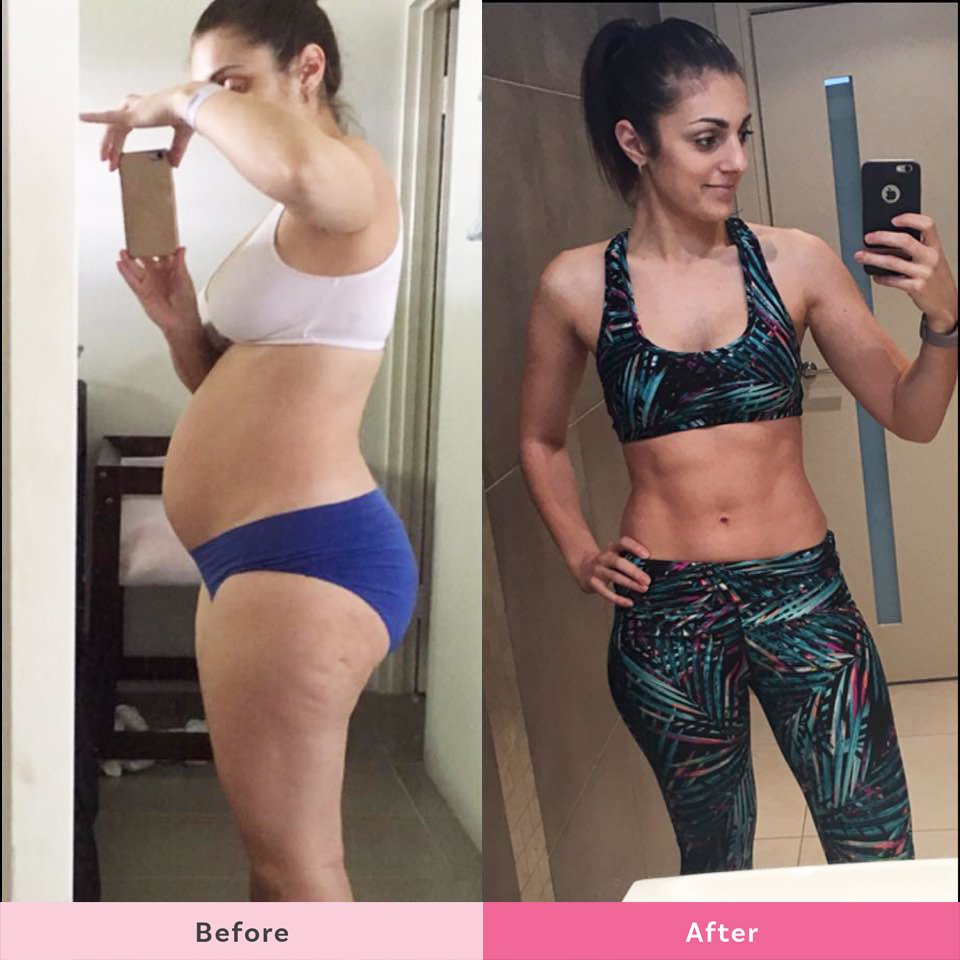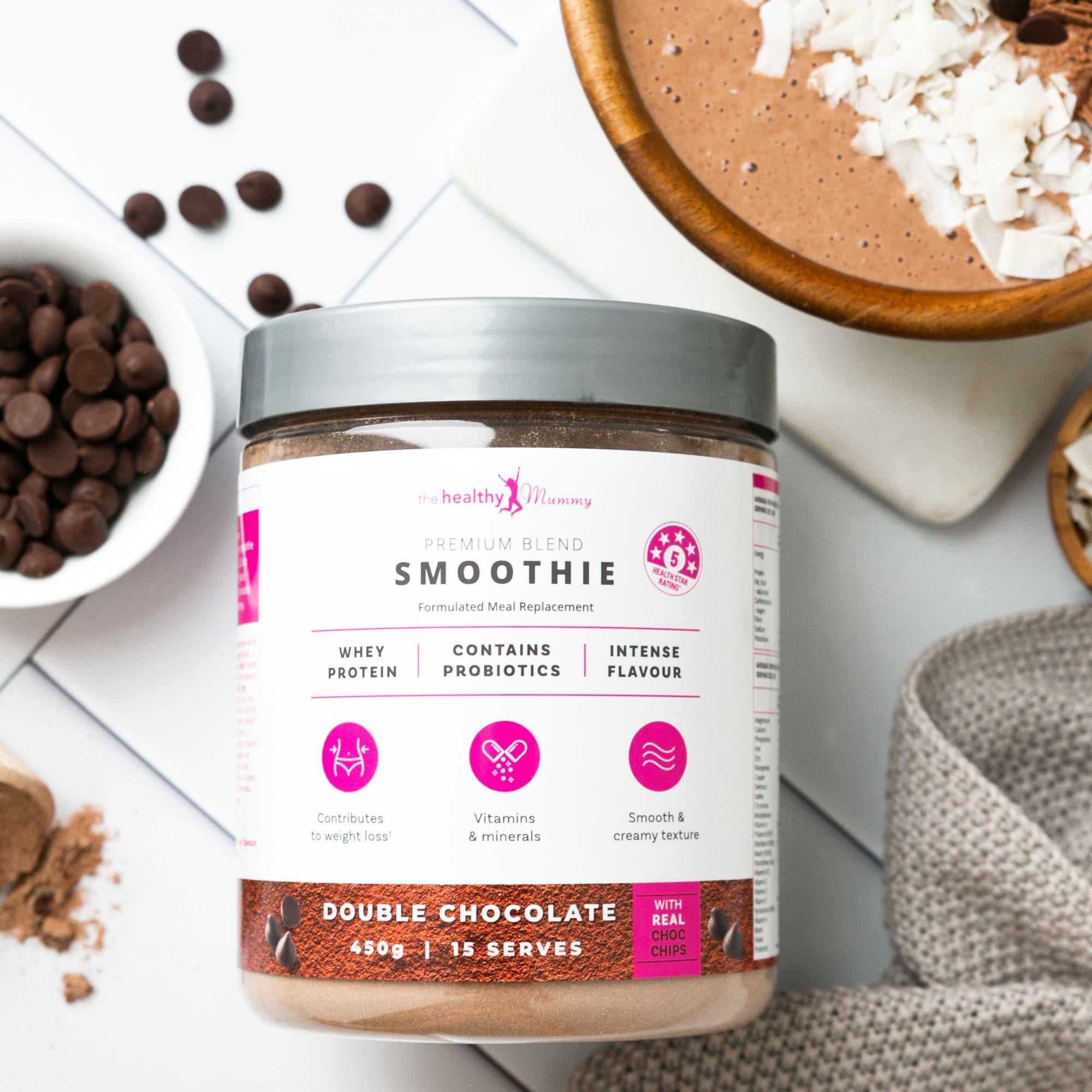Can you turn fat into muscle? Here’s everything you need to know
Most of the mums on our 28 Day Weight Loss Challenge want to lose fat, especially belly fat, but also at the same time build up our muscles.
Most of us want to lose fat, especially belly fat, but also at the same time build up our muscles and rock enviable abs.
We’ve often heard of the term ‘turn fat into muscle’ but is it that simple? Well, not quite.
Technically, turning fat into muscle is impossible as fat cells and muscle cells are made up of different tissues in the body.
You can’t technically turn your fat into muscle but the reverse is true as well – you can’t turn muscle into fat. The best analogy, you can’t turn an apple into a banana.
What can you do, then? The Healthy Mummy helps answer this…

Can you turn fat into muscle?
The process of burning fat is different to the process of building muscle.
Muscles are an active tissue that builds when it’s been broken down. The more stress you put on your muscles, the more they will grow. Muscles also burns calories 24/7 – even as you sleep!
When you exercise, you are effectively putting stress on your muscles and the body is triggering your brain to tell your body to repair ‘the damage’, causing you to build them up.
Whereas fat is quite simply where you store your excess energy. A.k.a. the food you’ve eaten that hasn’t been needed to turn into energy.
The best way to break down fat is to work on your diet and exercise. High intensity exercise such as running, walking and bike riding is what will help you burn off more fat.

How do you build muscle while also losing fat?
To preserve your muscles during weight loss, it is important to keep up your strength training and also eating a protein-rich diet – which will help keep building your muscles while also eating a calorie deficit.
The bottom line is your fat won’t turn into muscle, but you can still build muscle while losing the fat. But leading a healthy lifestyle with a good diet and lots of different types of exercise is the key.
6 high protein savoury snacks to help build muscle
How to banish tummy fat for GOOD!

There are an increasing number of scientific studies proving that the different sorts of fats which exist in the body develop for different reasons, and therefore require different strategies are needed to tackle them. This is especially the case with stomach fat.
There are two main types of stomach fat…
1. Subcutaneous fat
For new mums, subcutaneous fat is the most noticeable type of fat on the stomach. As the name suggests, subcutaneous fat is the sort of fat which lies just under the surface of the skin.
Women are most likely to accumulate this sort of fat around their abdomen, hips and buttocks. Subcutaneous fat is noticeable and can cause dimpling like cellulite.
This fat serves as the body’s energy storage system. If more calories are consumed than the body uses, extra calories are laid down as subcutaneous fat.
When more calories are burned than consumed, subcutaneous fat is the first sort of fat to be burned off by the body to meet the increased demands for energy.

2. Visceral fat (the dangerous one)
The second type of fat on the stomach area is visceral fat, also known as abdominal fat. This sort of fat differs from subcutaneous fat as it is less visible within the body.
Visceral fat forms within the body and around the organs. It cannot be seen from the outside and is far more dangerous than subcutaneous fat. Research is continuing into why some people seem to have greater amounts of visceral fat than others, but it is believed to have a lot to do with a poor diet.
What’s more, visceral fat is of great concern as it literally wraps itself around the major organs in the abdomen such as liver, kidneys, heart and lungs, as well as contributing to the clogging of arteries.
People will high levels of visceral fat are more prone to developing serious health issues such as heart disease. Visceral fat often accumulates around the liver and this leads the liver to become resistant to the body’s insulin, which in turn greatly increases the risk of type 2 diabetes.
In fact, visceral fat is often referred to by the medical profession as a ticking time bomb as many people are unaware that they have visceral fat and it cannot be seen accumulating as subcutaneous fat can.
Risk factors for developing visceral fat

There are several factors which make it more likely that visceral fat will develop.
These include:
- Smoking
- Heavy drinking
- Living a non-active lifestyle
- Eating a diet which is high in fat
- High levels of stress
New mums, who are struggling to find time to get to the gym and are eating on the run, may find themselves falling into more of these risk groups than they did before they gave birth.
How to deal with visceral fat
Unfortunately, visceral fat is harder to remove than subcutaneous fat. As it is hidden deep within your body, it is also almost impossible to keep track of progress as difference cannot be seen from the outside.
Improving the levels of visceral fat within the body should not be seen as a “quick fix”. Reducing the levels of visceral fat in the body and keeping them low is a long term project, and therefore the goal should be a lifestyle change rather than simply going on a diet for a few weeks or months until goals are achieved.
Healthy eating is one of the key elements to dealing with visceral fat, in particular cutting down on the amount of saturated fat eaten and trying to increase plenty of complex carbohydrates. The second key element is exercise. The gold standard is to aim for 45 – 60 minutes exercise per day, but for new mums this isn’t easily achievable.

The Healthy Mummy Core Workouts available on the 28 Day Weight Loss Challenge are 10 minute videos, designed to tighten the tummy, reduce belly fat and strengthen your core muscles.
To keep your body challenged, you should aim to complete a training routine that incorporates core exercises once to twice per week. Start with one session and as your strength increases, add in a second 10 minute session.
The Healthy Mummy Core Workout is best done at the end of any of your regular Healthy Mummy video workout – e.g Tabata, DanceFit, Butt & Thighs etc.
Any increase in activity levels will help burn calories, and this can be as simple as chasing the kids around in the park, or putting the baby in the pram and going for a brisk 30 minute walk.
The aim is to raise your heart rate and give you the feeling of being out of breath. In addition to diet and exercise, cut down on alcohol and stop smoking, and also try to deal with any issues causing persistent stress in order to minimise further your risk factors.
Samara’s Tummy Transformation on the 28 Day Weight Loss Challenge

Mum of two Samara’s transformation is UNREAL!
And for anyone who wants to know how she achieved those hot abs, Samara has shared her top three tips that helped her ditch the tummy fat and look and feel like a superstar:
- Start simple: Don’t underestimate the power of a good walk. Once your fitness levels increase, try adding in a bit of a jog. I started walking within the first few weeks of having my second daughter. The fresh air was good for everyone. Slowly I increased it to a jog every now and then, and now I try to see how long I can run for. I can feel and see the difference in my midsection.
- Never underestimate the good old crunch: Mix it up a bit too. Try some normal crunches, add in some twisted crunches, then throw in some oblique crunches! I love doing crunches on an exercise ball too for a raised crunch!
- Clean eating and drinking: They say that abs are made in the kitchen and they can’t be more right! If you really want to get rid of the fat or bloat around the tummy, then make sure your food is clean! Starving yourself will not work! The meals in the Healthy Mummy App are filled with perfect well-balanced recipes that will provide your body with the nutrients and energy that it needs!










